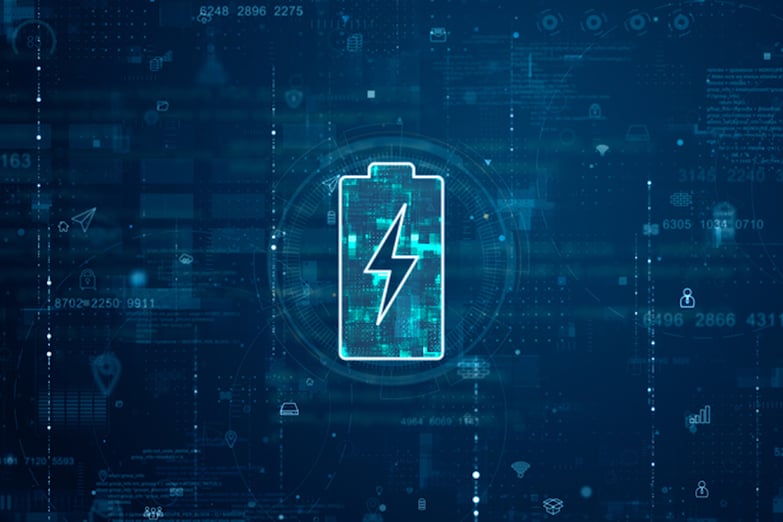Back to articles
Inside the next generation of efficient and compact power management

Bluetooth LE, Wi-Fi 6, and cellular IoT bring connectivity to low power IoT devices. The Nordic SoCs, companion ICs, and SiPs running these protocols are among the most power efficient wireless solutions on the market, extending devices’ battery life.
- Read more: The rise and rise of Bluetooth
But there’s more to managing power than just efficient chips; power from a battery or a mains source must be regulated and distributed, and if the device is powered by a rechargeable battery, it will occasionally need to be charged. That means no matter how efficient the processor, radio, and memory are in the wireless chip, a less-than-optimized power management system will compromise battery life.
Building a compact power management system Into one small package
Building an efficient power management system is one problem, designing it to be compact makes things even more challenging. Many IoT products are space constrained, yet conventional power management solutions typically comprise multiple chips—for example, voltage regulator, battery charger, fuel gauge, external watchdog, and hard reset—which take up precious space.
Nordic has addressed both the efficiency and space challenges of power management with its nPM Family of Power Management ICs (PMICs). The family comprises the nPM6001 (which features six independently controlled power rails), nPM1100 (a dual-mode configurable buck regulator and integrated battery charger) and the latest introduction, the nPM1300. This PMIC is optimized for maximum efficiency and compact size and simplifies system design by integrating the essential functions required for reliable operation into one small package.
Intelligent power management from the nPM1300
Within its 5 by 5 mm (QFN32) or 3.1 by 2.4 mm (WLCSP) compact form factor, the nPM1300 incorporates two buck converters, two load switches, a battery charger, USB-C compatible input, ship mode, and fuel gauge. This simplifies power management from as many as eight chips plus associated passives to one chip plus a few passives.
In addition to the high level of integration, the PMIC provides key system management features that typically must be individually added to conventional power management circuits. These features include key items such as failed boot recovery, hard reset, a power saving ‘hibernate’ mode, watchdog timer, and a power loss warning.
- Read more: Inside the nPM1300 Power Management IC
Precise fuel gauging without the power drain
It’s very useful for a consumer to have an accurate idea of the remaining battery life of their IoT device. Engineers typically achieve this by measuring the battery voltage—which is a proxy for remaining energy—or, for a more precise result, a coulomb counter, a device that continuously measures the current flowing into or out of a battery to determine the total cell charge.
The battery voltage measurement is simple to implement and uses little power, but is not very accurate, particularly if the battery is subject to temperature variances. The coulomb counter is more precise but requires additional components and drains more power. In comparison, the nPM1300 features a highly accurate fuel gauge that combines the simplicity and modest power consumption of a battery voltage measurement with the precision of a coulomb counter.
Nordic conducted experiments that compared a coulomb counter, battery voltage measurement, and the nPM1300’s fuel gauge. Compared to the coulomb counter, the battery voltage calculation peaked at nearly 20 percent error. In comparison, the nPM1300’s fuel gauge showed a maximum of two percent error at worst compared with the coulomb counter but was mostly within one percent.
Fuel gauge powered by software
The key to Nordic’s fuel gauge’s accuracy over a wide temperature range is the software algorithm powered by the host processor. The processor uses information such as the current flowing out of the battery, the battery terminal voltage, the system voltage, and a battery temperature thermistor reading.
For the algorithm to produce accurate results it must first be ‘taught’ the battery characteristics (which only has to happen once if the end product continues to use the same type of battery). The teaching is done using the Nordic Evaluation Kit (EK) equipped with a fuel gauge board to provide the right resistive load and the Nordic nPM PowerUP App.
After calibration and with the current, voltage, and temperature inputs, the host processor uses the Nordic-developed algorithm to accurately determine the battery’s state of charge for the life of the device. Power consumption for a one-second measurement frequency adds about four microamps to the typical host processor overhead.
Managing power from battery to antenna
Maximizing battery life demands taking responsibility for how each part of the wireless product’s system affects the overall power consumption. The developer needs to optimize each element—from the battery all the way to Cloud connectivity, including radio operation, processing, and power management—to get the most from the power source.
- Read more: Making cellular deployment easier
Basing a design on a Nordic SoC or SiP—among the lowest power wireless chips on the market—together with a Nordic nPM6001, nPM1100, or nPM1300 is an excellent foundation for keeping the energy consumption of wireless products as low as possible.


